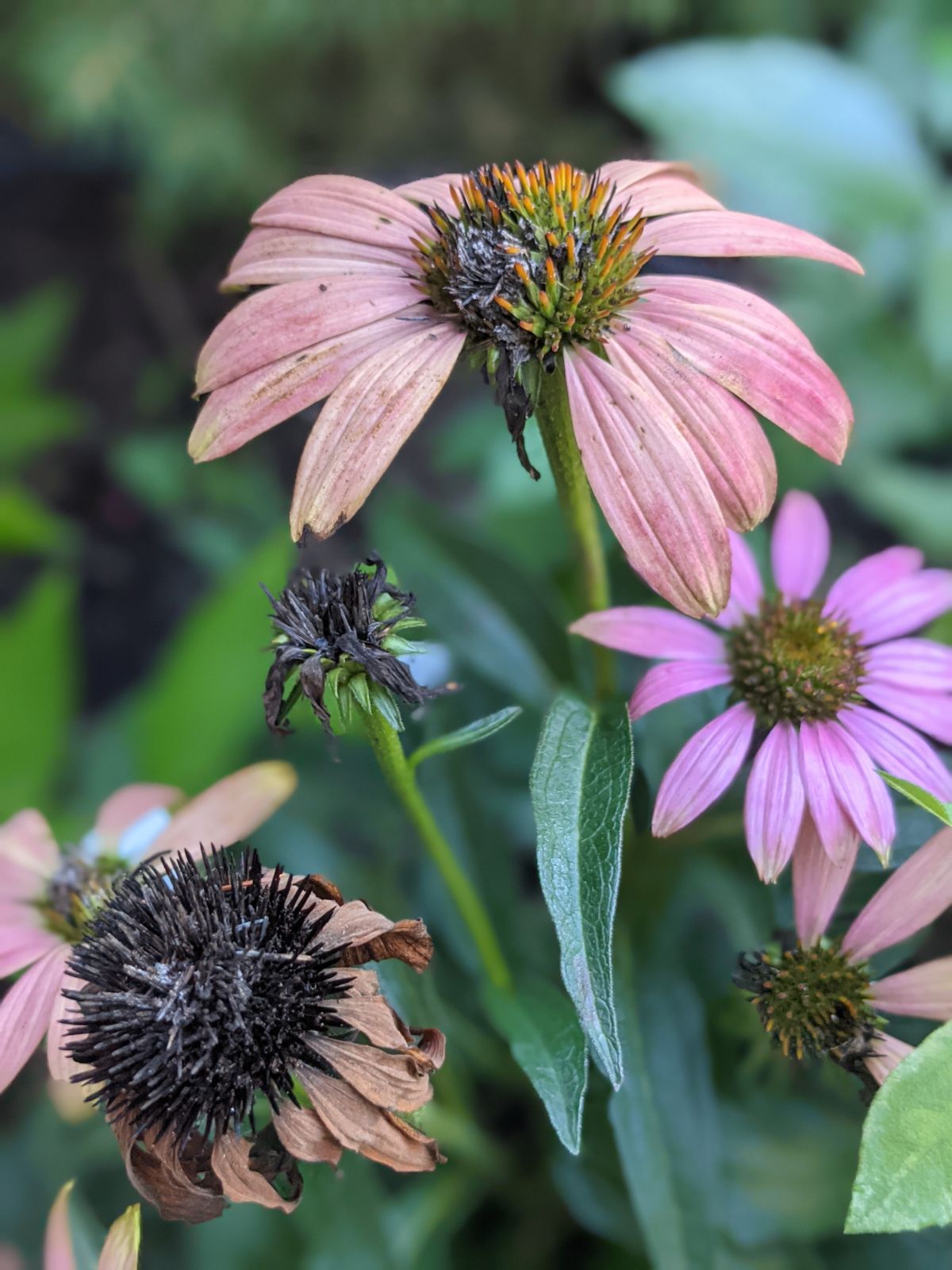How to Deadhead Coneflower | Deadheading for More Blooms
Also known as echinacea, coneflowers continue to be a favorite native plant loved by pollinators. Learn how to deadhead coneflower plants to prolong blooming!
Growing coneflowers in the garden can be rewarding for quite a few reasons. As native plants, pollinators like bees and butterflies love them. Birds also love to eat the echinacea seeds.

As perennials, coneflowers give a wonderful show of color, blooming for much of the summer often until the big frost in the fall.
If you are new to this, you can also check out our post What Is Deadheading to get a crash course!
Deadheading Coneflowers
The process of deadheading coneflowers is easy! This garden chore takes very little time and may boost your plants’ blooming potential.
Even if you only have a few spare moments here and there, you’ve got nothing to lose. Plan to remove spent coneflower blooms a few times per season to keep your plants healthy and tidy.

How to Deadhead Coneflower Plants
With pruning shears or scissors in hand, get ready to easily tackle this quick but meaningful task!
You will simply snip away the spent, faded blooms from your echinacea plants.
Follow these easy steps on coneflower deadheading:
- Identify deadheads. Check your coneflower plants for spent blooms.
- Snip away dead coneflowers. Using pruning shears, hold the dead flower in one hand and pruners in the other. Clip the stem just above a leaf set. You may even see a new flower bud forming!
- Double check your work. You may need to clip a bit lower on the stem to avoid having unnecessary lengths of stem poking out. Snip away more stem if needed.
- Set aside the spent blooms for the birds. Our avian friends absolutely adore coneflower seeds! You can also look for seeds to save for your own collection.
In a matter of days to weeks, you should see new echinacea blooms getting ready to open!

Coneflower Deadheading Tips
When you deadhead coneflowers, you allow your plants to refocus their energy on producing more blooms instead of seeds.
This is important if your main goal is to enjoy the flowers!
We love our coneflowers in our cutting gardens. They seem to last forever in our indoor arrangements, too!
Maximize Your Efforts!
Here are a few tips on how to deadhead coneflowers for maximum impact and benefit in your garden.
- Pick a day to do your deadheading. You can deadhead echinacea, roses, zinnias, snapdragons, and all your other flowers at the same time if you like. Be productive!
- Protect your hands. Wear gloves if possible as coneflowers can have sharp bits that may cut or irritate your thumb and fingers. (Especially if you try harvesting the echinacea seeds!)
- Sprinkle some of the seeds. If your echinacea deadheads already have mature seeds, consider sprinkling them where you’d like new plants and see if they come up next season.
- Enjoy cut flowers! Removing the flowers after blooming isn’t your only option. Try cutting coneflowers for indoor arrangements, as this also stimulates the plant to produce more blooms. Cut those coneflowers and come back again to see new blossoms getting ready to open!
- Leave the last of the coneflowers to the birds. In the mid to late fall in your region, stop deadheading coneflowers. Allow the plants to go to seed and let the dead flowers stay on the stems. Birds will love to feast on these seeds throughout the winter!
- Personal Note – One day, I saw a goldfinch and a blue jay on my deck at the same time, looking in my window at me. Further in the yard, I saw robins and a cardinal! I will always try to leave some seeds on the plants for our feathered friends. 🙂
- Personal Note – One day, I saw a goldfinch and a blue jay on my deck at the same time, looking in my window at me. Further in the yard, I saw robins and a cardinal! I will always try to leave some seeds on the plants for our feathered friends. 🙂
- Be aware of coneflower diseases. If your plants happen to contract aster yellows, you don’t deadhead the coneflowers. Sadly, you must remove them from your garden and destroy them / bag them and throw them in the trash.
Do you have any other tips on coneflower deadheading? Please share in our comments so we can all benefit!

FAQ

To Deadhead Coneflower Or Not?
I do deadhead coneflower plants, when I have time! I love to get as many flowers as possible so it works out great.
Of course, sometimes I get busy and I don’t deadhead as often as I could. This is okay! Some plants will make seeds then, but usually blooms still keep coming!
So, I guess I do prioritize echinacea deadheading efforts when I have time, but sometimes it falls too far down the to-do list.
By the way, you can learn a bit more about echinacea / coneflowers at the gardening portal of Cornell University.
What about you? Do you spend time deadheading coneflowers in your garden or do you let nature take its course?
Feel free to share any additional tips or ask questions in our comments below! We love hearing from you.
Happy Gardening!






